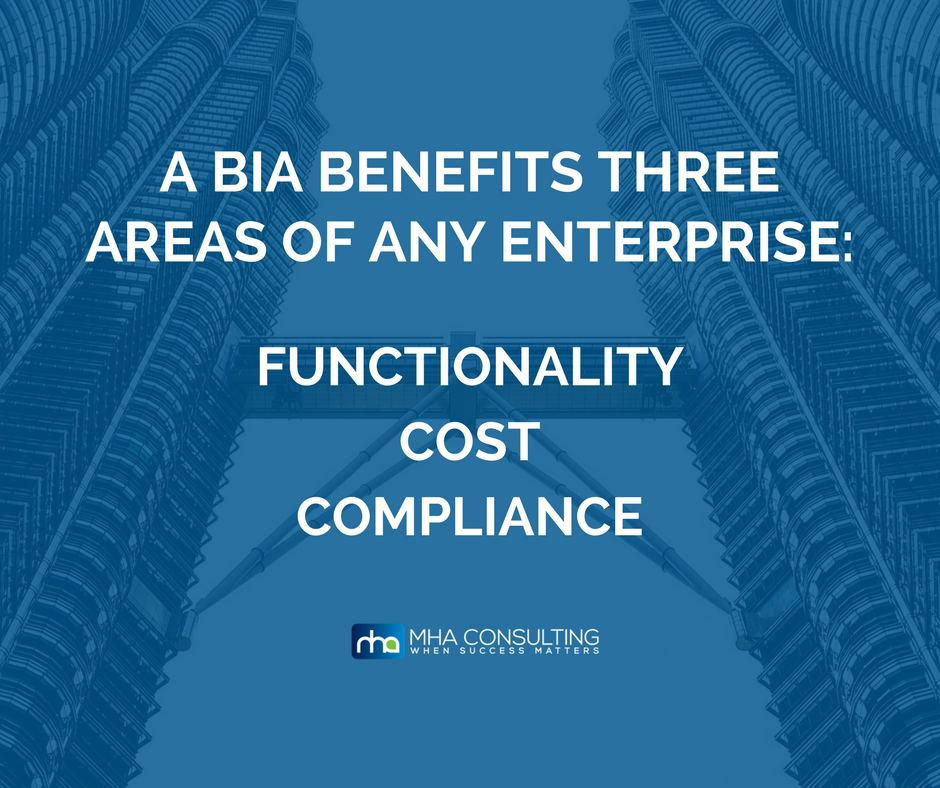Convincing Management To Do a BIA

Those of us with feet on the ground understand the value BIA (Business Impact Analysis) data brings when it comes to strategy development and prioritization, but how can we convince resource/financial decision makers and project stakeholders to approve a BIA?
Almost every BCM engagement will include performing a Business Impact Analysis . However, in many cases, this is an item that gets cut. It is often not seen as necessary or the cost/benefit does not meet management expectations. We know that a BIA is essential to the health of any solid BCM program, as is management support. We’re going to review some of the core benefits of a BIA so that you can convince the right people that conducting a BIA is beneficial to your entire enterprise.
Let’s go over some of the common questions asked or arguments made when proposing a Business Impact Analysis:
- We just did one recently (often recently means several years).
- Our business has not changed enough to warrant an updated BIA.
- Can’t we just ask the leaders of each department for the information?
- This is not business critical. We know what is a priority.
- You want 2 – 3 hours of how many people’s time? From every department?
Start talking up the need for a BIA well before your proposal is in process. Often management does not see BCM concepts as strategic, but rather as only “regulatory” or “audit” necessities. At every opportunity, include the why of BIAs with senior management. As is true with most new needs or projects, it is necessary to have an education process before approval occurs.

Common BIA Benefits
- Improved Functionality
- You can document and/or identify interdependencies between processes.
- Actual applications and systems used, as well as their importance, are identified and updated. The functional importance of the applications become better understood by IT.
- Shadow IT functions, often with critical business dependency, are identified. There is often an assumption that these SaaS/cloud-based applications do not have a backup or recovery need – that the vendor will “handle” that; this is not the case.
- You gain a better understanding of the nature and complexity (or lack thereof) of the IT and recovery processes.
- Identify or understand new processes or changes to existing processes.
- Improvements in interface between departments and groups.
- Increased understanding by departments of their role within the organization.
- You achieve a better understanding of actual impact.
- Gaps in IT recovery and business availably/recovery requirements are eliminated.
- Reduced Costs
- Elimination of potential fines related to regulatory requirements.
- Removal of potential redundancies and unnecessary services or software.
- Identification of potential changes to insurance, maintenance, or licensing costs.
- Ability to reduce or remove costs based on new understanding of needs.
- Increased Compliance
- Identification of potential issues or gaps in regulatory compliance.
Achieving a High Return from your BIA
- Utilize a comprehensive questionnaire to perform the face-to-face portion of the BIA. You must complete, review and validate the questionnaire ahead of time.
- Identify critical departments/processes in the organization with senior management. Perform the BIA for those departments and processes rather than the entire organization.
- You may choose to perform a pilot for just one department. The risk to this approach is that you may miss some critical/important processes.
- Utilize a standardized spreadsheet (or an online tool such as BIA On-Demand) for data gathering.
- Consider performing remote BIA sessions/interviews.
The best way to convince management of the need for a Business Impact Analysis is to show them the benefits up front. Management teams are looking at the overall needs or risks of their organizations. Make sure that they understand the risks, costs, and benefits of a BIA, as well as options for streamlining the Business Impact Analysis process, to encourage approval and acceptance of your plan.
Need some help with conducting a BIA? We’ve developed a comprehensive checklist to help you get started: A Business Impact Analysis Checklist For Continuity Managers









